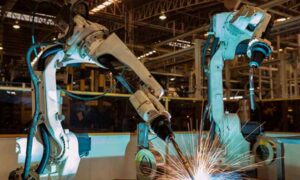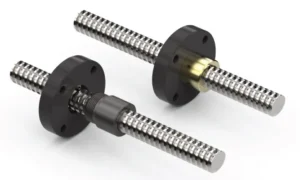In the dynamic world of industrial automation, precision and efficiency are paramount. Proximity sensors have emerged as a transformative technology, revolutionizing how industries detect, measure, and interact with objects in various environments.
Unlike traditional sensors, proximity sensors operate without physical contact, ensuring durability, reliability, and versatility across multiple applications. This article delves into the features, benefits, and transformative impact of proximity sensors, with a focus on their role in industrial automation.
What Are Proximity Sensors?
Proximity sensors are non-contact components designed to detect the presence or absence of objects within their sensing range. These sensors rely on electromagnetic fields, light, or sound waves to identify objects, eliminating the need for physical interaction. Their ability to function in harsh environments and detect objects with precision has made them indispensable in industries such as manufacturing, robotics, automotive, and healthcare.
Types of Proximity Sensors
Proximity sensors come in various types, each tailored to specific applications. Among the most widely used are:
- Inductive Proximity Sensors: Designed to detect metallic objects using electromagnetic fields. These are commonly used in manufacturing processes where precision and robustness are crucial.
- Capacitive Proximity Sensors: These sensors detect both metallic and non-metallic objects by measuring changes in capacitance caused by the proximity of an object. Their ability to sense materials like glass, plastic, and liquid makes them ideal for applications such as packaging and level detection.
- Photoelectric Sensors: Utilizing light beams to detect objects, photoelectric sensors are suitable for long-range applications and high-speed motion sensing.
- Ultrasonic Proximity Sensors: These sensors use sound waves to detect objects and are particularly effective in environments with dust, moisture, or irregular surfaces.
Key Features of Proximity Sensors
Proximity sensors offer numerous advantages that make them an ideal choice for industrial automation:
- Non-Contact Sensing: Eliminates wear and tear, enhancing the longevity of the sensors and reducing maintenance costs.
- Wide Temperature Range: Many sensors can operate between -50°C and 100°C, making them suitable for extreme environments.
- High-Speed Detection: Their ability to detect objects in motion ensures seamless operations in fast-paced manufacturing processes.
- Resistance to Harsh Conditions: Proximity sensors are designed to function in environments with oil, water, or other challenging substances.
- Flexibility in Applications: From detecting metallic components in assembly lines to monitoring liquid levels in tanks, proximity sensors adapt to various industrial needs.
The Role of Proximity Sensors in Industrial Automation
Industrial automation demands precision, speed, and reliability. Proximity sensors meet these demands by offering unparalleled performance in several key areas:
- Enhanced Machine Efficiency
Proximity sensors ensure precise detection of objects, enabling automated machines to perform tasks with minimal errors. This improves overall productivity and reduces downtime caused by manual interventions.
- Improved Safety Standards
By eliminating the need for physical contact, proximity sensors minimize the risk of accidents in hazardous environments. For example, they can detect when a machine component is out of alignment or if an operator is too close to a moving part.
- Cost Savings Through Durability
Traditional contact-based sensors are prone to wear and tear, leading to frequent replacements and maintenance. Proximity sensors, being non-contact, offer long-lasting performance, reducing operational costs significantly.
- Versatility Across Industries
Proximity sensors are not confined to a single application. Their ability to adapt to diverse environments makes them valuable across industries. For instance, capacitive proximity sensors are widely used in packaging lines to detect various materials like glass and plastic.
Real-World Applications of Proximity Sensors
Proximity sensors have found applications in numerous industries, demonstrating their versatility and importance:
- Manufacturing: Used in assembly lines to detect components, ensuring accuracy and quality control.
- Robotics: Enable robots to interact with their surroundings, detect objects, and navigate safely.
- Automotive: Assist in parking sensors, collision detection, and automated braking systems.
- Healthcare: Used in medical devices for non-invasive measurements and monitoring.
- Food and Beverage: Ensure proper packaging and sorting in high-speed production lines.
Future of Proximity Sensors in Automation
As industries embrace advanced technologies like the Internet of Things (IoT) and Artificial Intelligence (AI), proximity sensors are poised to play an even more critical role. IoT-enabled proximity sensors can provide real-time data and predictive insights, enhancing decision-making and operational efficiency. Furthermore, advancements in sensor technology will lead to smaller, more energy-efficient sensors capable of functioning in increasingly complex environments.
Why Capacitive Proximity Sensors Stand Out
Among the various types of proximity sensors, capacitive proximity sensors have gained significant attention due to their versatility. Unlike inductive sensors that are limited to detecting metallic objects, capacitive sensors can detect a wide range of materials, including non-conductive ones like plastic and wood. This makes them invaluable in industries where detecting diverse materials is essential.
For instance, in the food and beverage industry, capacitive proximity sensors are used to monitor liquid levels in transparent containers. Similarly, in manufacturing, they ensure the accurate placement of non-metallic components, contributing to the overall efficiency of the production process.
Conclusion
Proximity sensors have transformed industrial automation by providing a reliable, non-contact solution for detecting objects and monitoring processes. Their ability to function in harsh environments, coupled with their high-speed sensing capabilities, makes them indispensable in modern industries.
With advancements in technology and increasing demand for precision and efficiency, proximity sensors, particularly capacitive proximity sensors, are set to redefine the future of automation. By adopting this innovative technology, industries can achieve higher productivity, enhanced safety, and significant cost savings, ensuring their success in an increasingly competitive market.



































